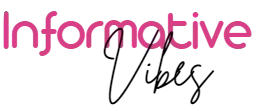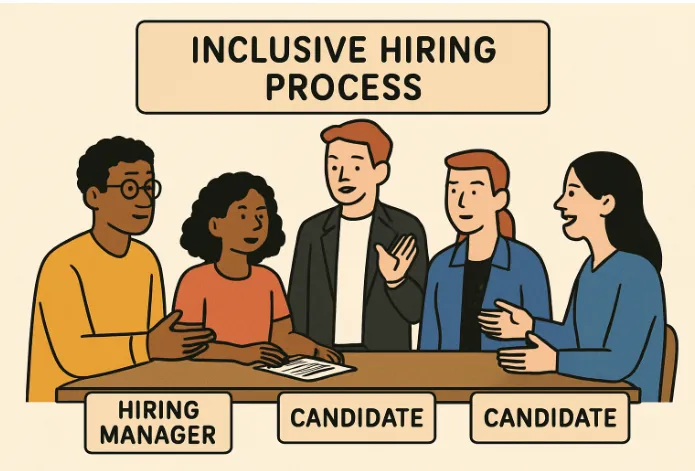Key Takeaways
- Inclusive hiring practices are pivotal in fostering diversity and advancing organizational performance.
- Structured interviews and regular bias mitigation training help root out unconscious bias.
- Diversifying recruitment channels and adopting flexible work options are essential for boosting candidate variety.
- Measuring and improving diversity initiatives ensures progress toward real equity and belonging.
Creating an inclusive hiring process is no longer optional—it’s a strategic imperative for organizations seeking to build dynamic, innovative, and adaptable teams. Pursuing inclusive hiring with intention and consistency will unlock the benefits of diverse perspectives, improved problem-solving, and a more resilient workplace culture. Understanding the foundations of inclusive hiring can start with resources like this, a hiring guide that helps define hiring practices shaping workforce diversity from the outset.
Inclusive hiring practices are designed to remove barriers that might discourage candidates from underrepresented backgrounds. By actively breaking away from outdated recruitment norms, you attract and retain people who bring unique talents and viewpoints to your organization. This commitment goes beyond policy—it’s about embedding inclusivity into every stage of your recruitment lifecycle and hiring process. A thoughtfully inclusive approach makes it clear to candidates that your values match the reality of your workplace.
Crafting Inclusive Job Descriptions
Job descriptions are the first touchpoint a candidate has with your company. To open doors for all, use gender-neutral language and focus on the true core skills necessary for the role—avoid unnecessary qualifications that could discourage great applicants who don’t fit rigid criteria. Consider free tools to flag and edit biased wording before posting open roles. Clear, inclusive descriptions send a welcoming signal and invite applications from a greater range of backgrounds and experiences.
Expanding Recruitment Channels
Traditional recruitment networks may unintentionally limit your talent pool. Forge new partnerships with organizations that serve underrepresented groups and tap into community career fairs, targeted online job platforms, and diversity-focused professional associations. Outreach to groups like the National Urban League, Out & Equal, and other advocacy organizations can help you reach candidates who might otherwise miss your openings. You demonstrate your ongoing commitment to equity and workforce representation by widening your recruitment lens.
Implementing Structured Interviews
Standardizing your interview process is key to leveling the playing field. Use structured interviews with predetermined questions tied to the role’s competencies, making it easier to compare candidates fairly. Document each assessment using objective rating guides for consistent evaluation. Incorporating standardized scoring systems reduces the likelihood of subconscious preferences swaying decisions and creates greater transparency for everyone involved.
Providing Bias Mitigation Training
Even the most well-meaning hiring teams can inadvertently introduce bias into the process. Regular bias mitigation training helps raise awareness of unconscious attitudes and instills practical techniques for fair assessment. Training programs should be ongoing—not just a one-off event—embedding principles of equity and inclusion into your organization’s DNA. Make space for open dialogue, encourage feedback, and provide tools that help decision-makers recognize and manage their biases throughout the hiring journey.
Utilizing Skill-Based Assessments
Shift the focus from how candidates present on paper to how they perform in real-world tasks. Assign practical exercises, assessments, or sample job scenarios tailored to the role. This allows candidates from non-traditional backgrounds to demonstrate their true abilities, giving everyone a fair shot at success. Skill-based hiring is not only fairer but also better at predicting on-the-job performance. According to Forbes, companies are increasingly moving towards this approach as it builds stronger teams and broadens the pool of qualified candidates.
Offering Flexible Work Options
Flexible work models—remote, hybrid, or part-time—send a powerful message of accommodation and trust. By offering options that enable people with disabilities, caregivers, or those in geographically remote areas to participate, you level the playing field and tap into wider talent sources. Flexibility is a critical differentiator in today’s job market, and organizations willing to adapt often become employers of choice for ambitious, diverse candidates.
Assembling Diverse Hiring Panels
Diverse interview panels reduce the risk of echo chambers and introduce varied perspectives into the decision process. Aim to include individuals from different departments, backgrounds, genders, and levels of seniority. This improves the quality of candidate assessment and mirrors the inclusive environment new hires can expect. Reinforcing panel diversity, combined with interview training, keeps the focus on merit and relevancy to the job rather than shared experiences or cultural affinity alone.
Measuring and Tracking Diversity Efforts
Continuous improvement depends on transparency and data. Use applicant tracking systems and analytics to monitor where your candidates come from, which channels are most effective, and demographic trends in applications and hiring. Set clear goals, monitor progress, and communicate findings to all stakeholders. Regular reporting helps identify trouble spots and guide future equity investments.
Transforming your hiring practices is not a one-time project; it’s an evolving commitment to creating a workplace where everyone can thrive. Adopting these steps will help your organization build a more inclusive, creative, and high-performing team that truly reflects our world.



